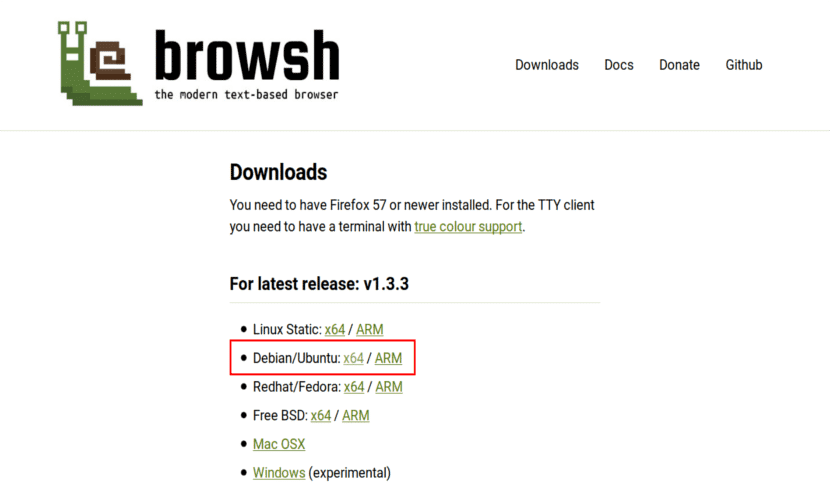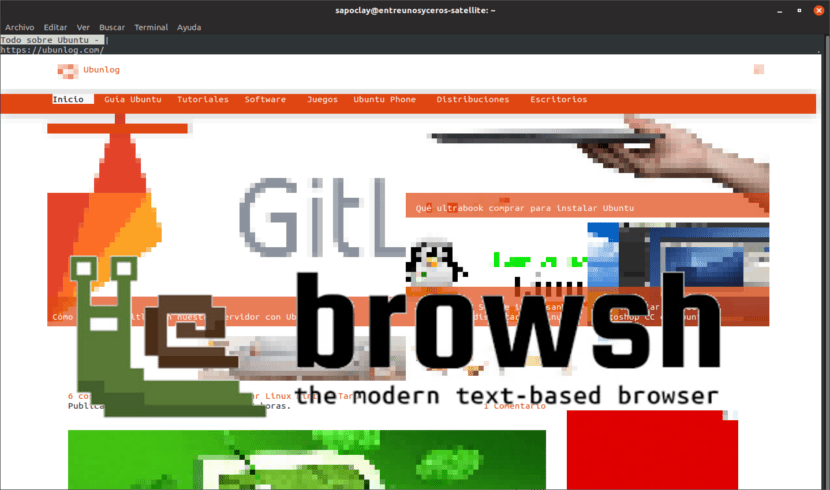
In the next article we are going to take a look at Browsh. It is about a purely text-based browser that can be executed in most terminals and in any browser. The terminal client is currently more advanced than the browser client. In this article we will see the option for the terminal.
Today already there different web browsers for the terminal. Perhaps the one I had liked the most so far is Lynx. It is arguably the best known text browser, while being one of the oldest web browsers that is still in active development. Although it is also true that Lynx is very much of his time and I personally notice the lack of some things that would be interesting to me.
In contrast to other browsers for the terminal, Browsh supports HTML5, CSS3, JavaScript, and very surprisingly video, photos, and WebGL content. It is also cross-platform and open source.
This browser only has one important requirement, and that is that we must have a recent version of Firefox installed (v57 or later). This is because Browsh uses Firefox to search for web pages, then it passes them to the terminal through a web extension and thus be able to display the pages.
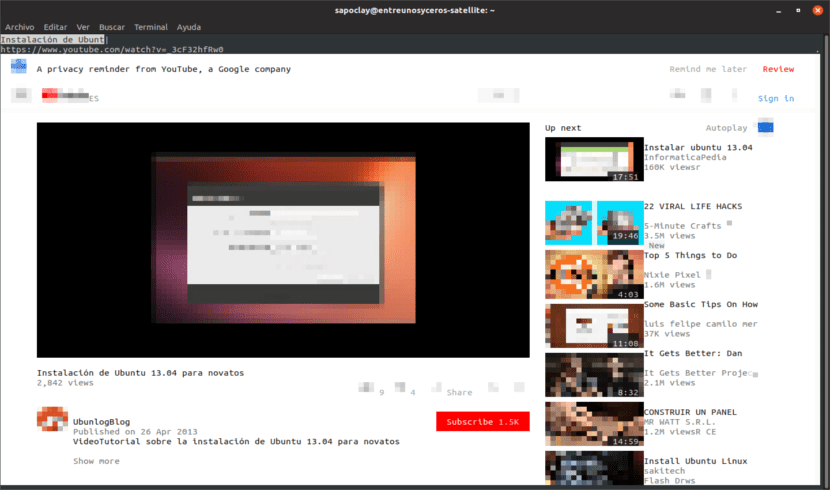
What can attract the most attention of this browser is that it is the only one that can generate images and videosBut don't expect state-of-the-art graphics. In the videos it will allow us to listen to the audio, but the resolution is extremely low. Graphics appear super pixelated. This is because Browsh uses (for citing your own website) the 'UTF-8 half block trick ()' to simulate basic graphics.
Next we will see a screenshot of what it looks like a Google search from Browsh:
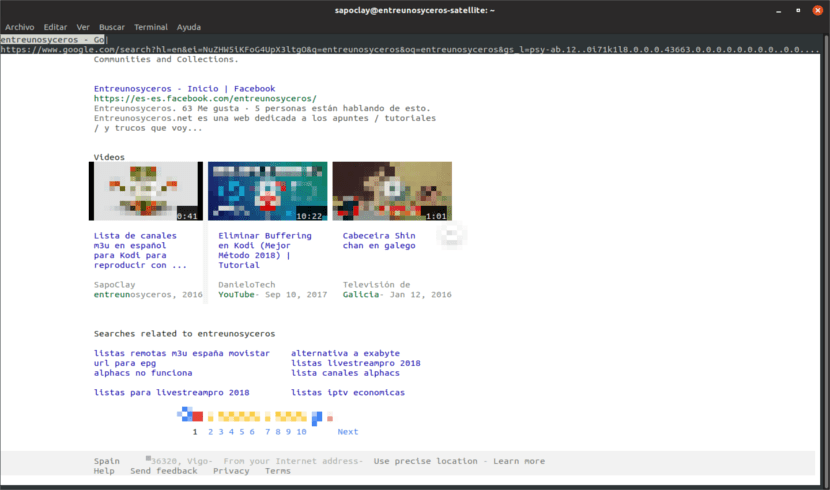
According to its developer, the goal of the browser is "to significantly reduce bandwidth and increase browsing speed." Given the depends on Firefox to perform web page searches and pass them to the application, the bandwidth point seems more than debatable. The browsing speed during the test that I have carried out has been quite good.
Download and install Browsh on Ubuntu
Browsh source code is available at Github, in case anyone wants to get involved, try it out, or report any issues.
Binary downloads and that Ubuntu installers are available on the website if we want to install it locally. Browsh itself is a small download and is very easy to install on Ubuntu.
From there we can get hold of the necessary .deb file for Ubuntu. Once the download is finished we will only have to open a terminal (Ctrl + Alt + T). In it we are going to write, from the folder in which we have saved the downloaded file:
sudo dpkg -i browsh_*.deb
Once the installation is finished, in the same terminal we can launch it by typing:
browsh
As you can see in the following screenshot, the home page that we will see is that of the google search engine. We can use the mouse to move to the search box to start browsing and clicking on the links. Though it's much faster to use keyboard shortcuts to move around the browser. These can also be consulted in the project website.
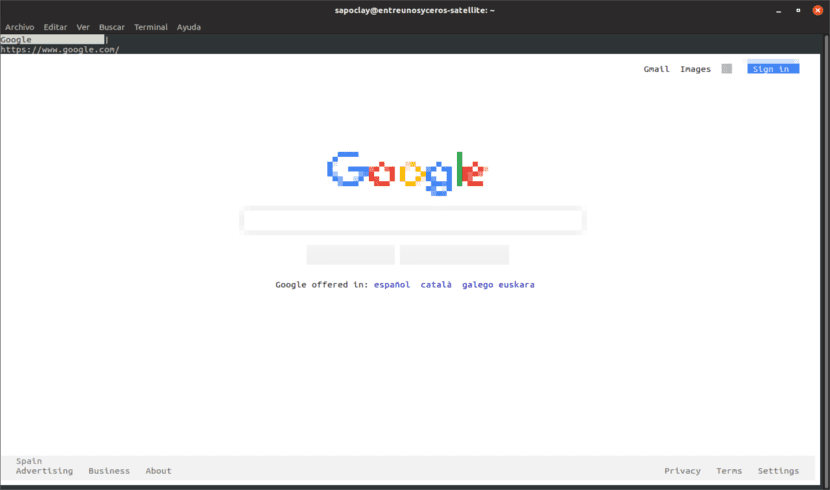
Uninstall browsh
Removing this program from our system is as simple as removing any other .deb package. We just have to open a terminal (Ctrl + Alt + T) and write in it:
sudo apt remove browsh
This is a very interesting browser for those who often use an environment without X. It could become your new best friend and ally. If what you are looking for is primarily a text browser, you should take a look.
To obtain more complete information on the how, what and why of this little browser, anyone who wants can go to the documentation offered from the Browsh website.
